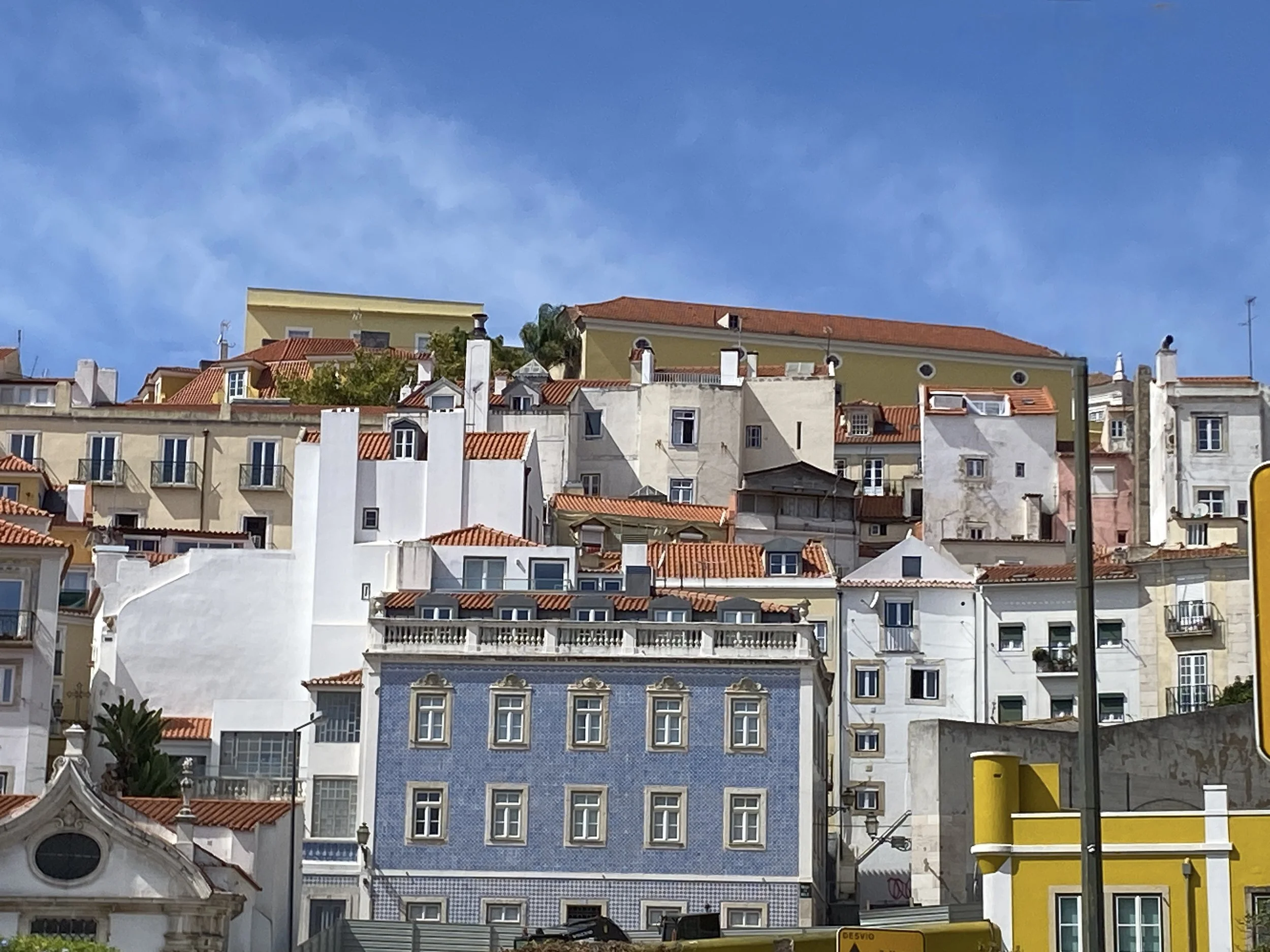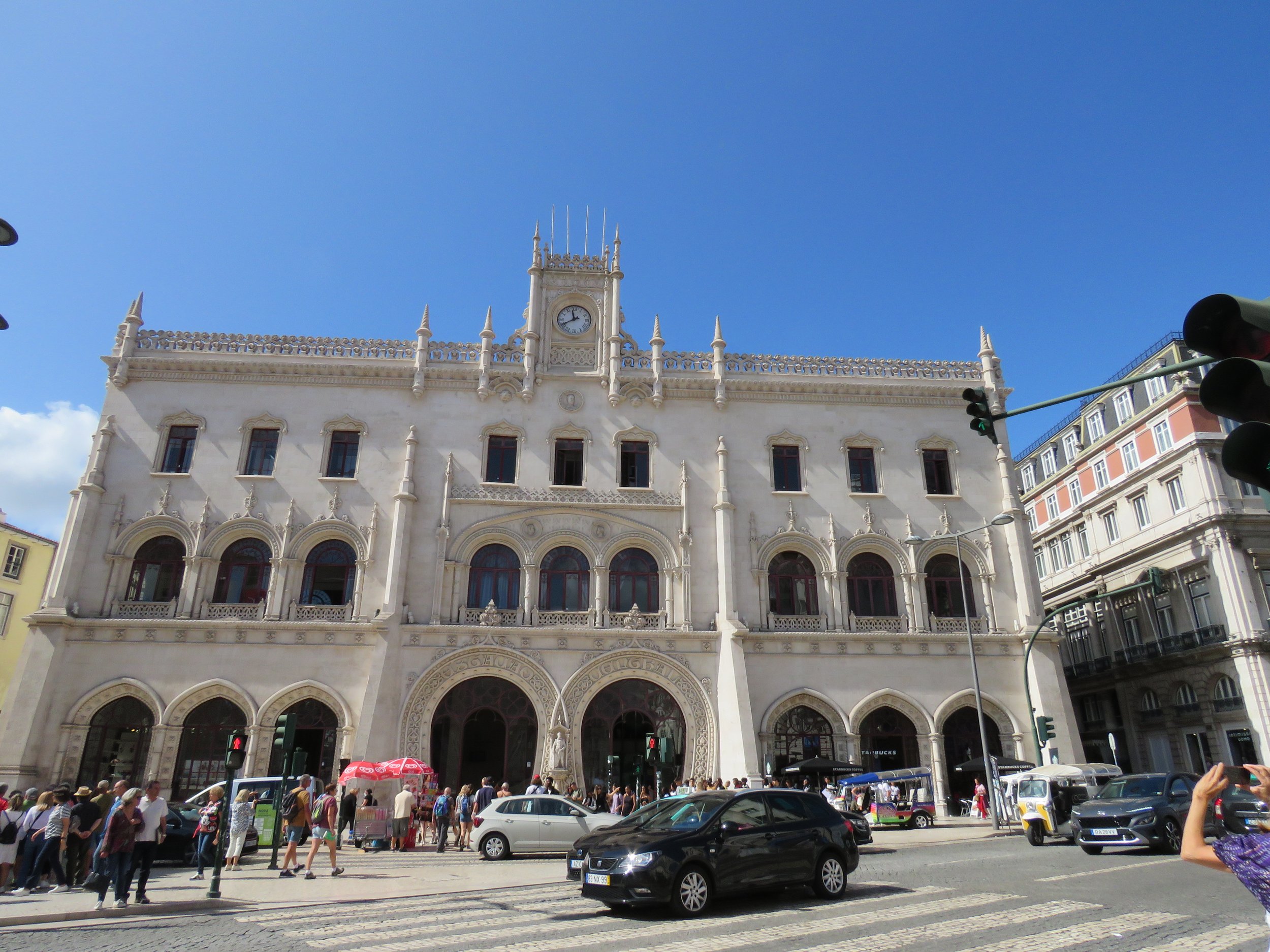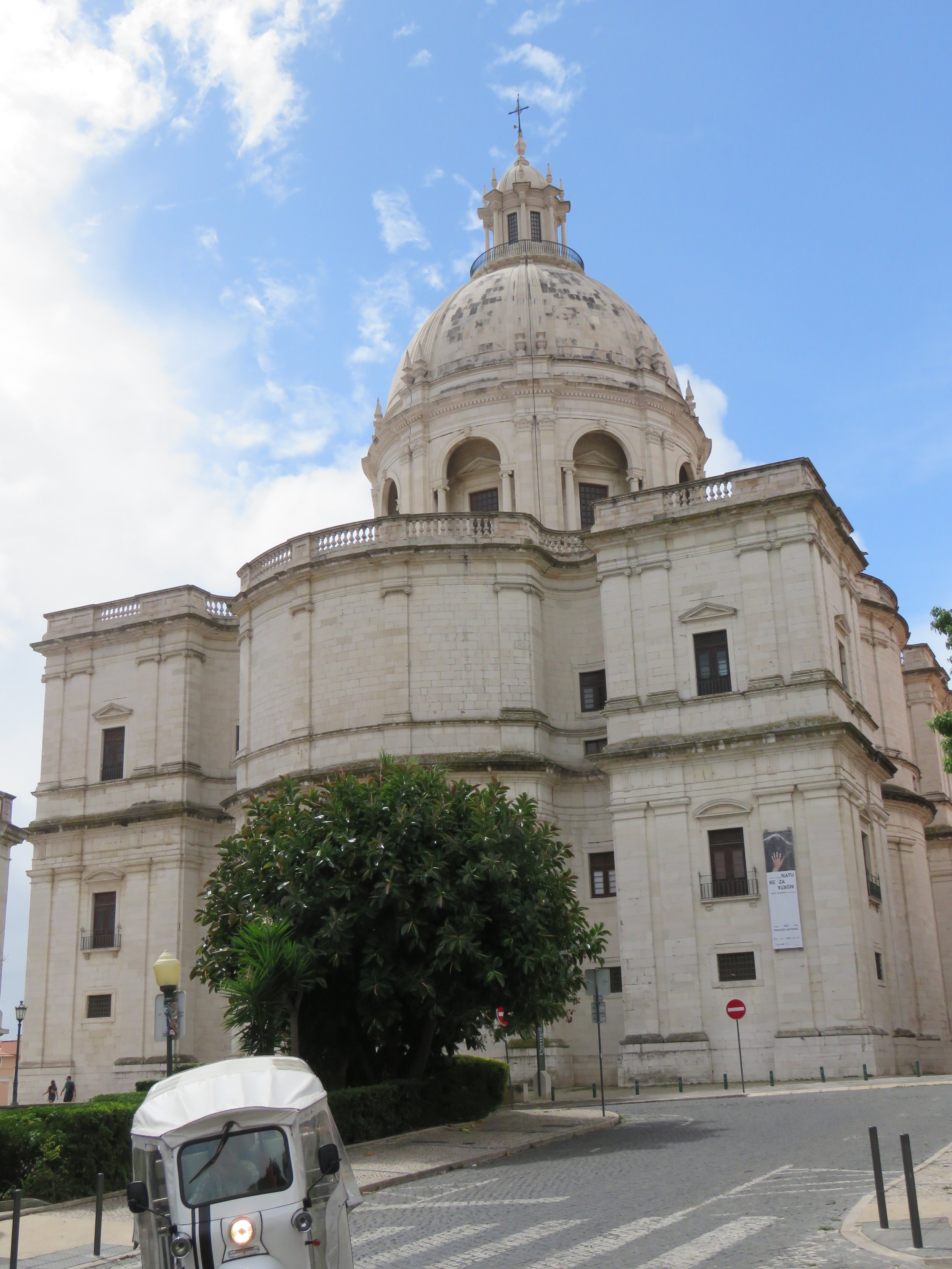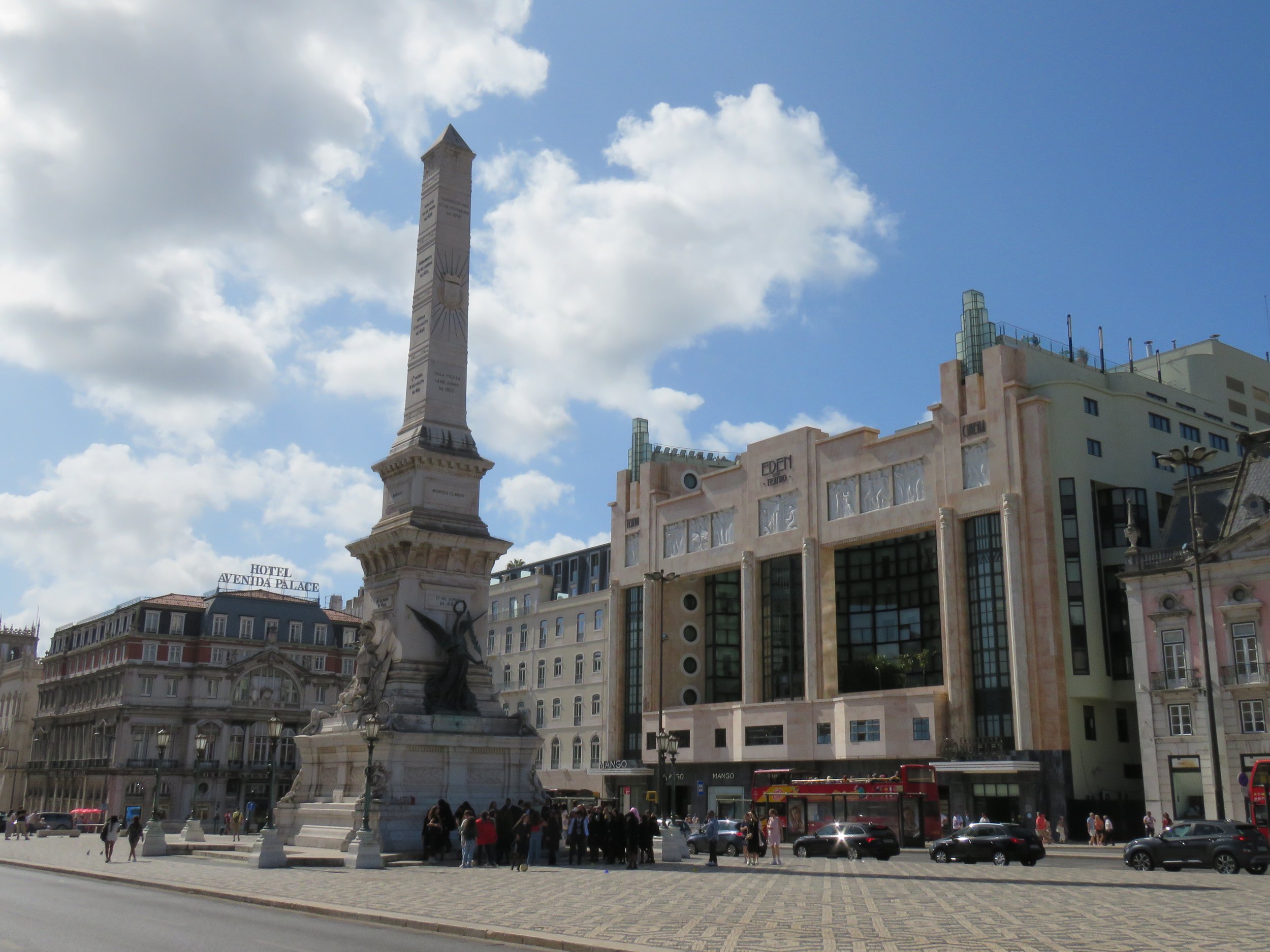We were searching for a comfy but affordable place to stay during four days of exploring Lisbon. ‘Perfect For Two’ - the VRBO site said.
We knew we wanted a small apartment with a kitchen and not a hotel room. We also knew we wanted to be in the heart of the old city.
So when we found this listing, we studied the photos, the reviews and the approximate location on a map. It seemed a good fit so we booked it. The owner replied instantly, in great English, and was very helpful with directions about getting there.
Once we arrived at the airport, and activated our Portugal e-sim card (Airalo.com) we took a taxi and told him the address: ‘Beco da Verónica’. Thanks to the wonderful app Rome2Rio, which tells us how much to expect in taxi fares anywhere in the world, we knew that the taxi fare would be about 15 euros. We bartered for that and he agreed. Later, we heard from Canadian friends that they paid 70 euros for roughly the same distance…
The tiles in Lisbon are amazing, entire buildings can be covered in tiles.
When we reached the inner city, the taxi driver drove up and down streets that got narrower and narrower. Most were one way. After some head scratching, he told us ‘Here!’. We had our doubts but left the safety of the taxi bubble and walked up the street. No number 7. It didn’t feel right. We asked some women and they knew. ‘Rua’ means ‘road but ‘beco’ means alley. Yes, we were on Veronica road, but we needed Veronica alley! Not far. Eventually we found the right place, complete with lock box and key.
The little apartment was indeed Perfect For Two. Or one if you’re alone. Kees had to bend over to enter because the door is a historically protected front door, retaining the original look and feel of Lisbon’s rich history.
Steep steep streets!
We like staying in inner city alleys because it means no traffic. And the apartment was indeed dead quiet. It had a brand new bathroom, a very comfy bed and a sitting space with small kitchen. Everything we needed. The owner was wonderful. She send us messages about cultural events happening while we were there and recommended shops and restaurants nearby.
We hurried off to a grocery store that was still open at 9 PM. Lisbon is built on seven hills so we went down towards the water, found a shop and then had to lug our groceries back up hill. I wondered many times how elderly people get around on Lisbon’s steep, cobblestoned streets…
Lis-bon - I wonder if it means ‘walk-well’ because you sure have to be able to walk well in this city built on seven hills! Leave your high heels at home and wear sturdy foot wear on the old cobblestone streets. The next days we walked. We walked up and down - along the quays where cruise ships from around the world were moored, spweing visitors into the city. We walked to historic buildings and through parks. Our house was not far from the Mercado de Santa Clara - a historic covered market which now has a combination flea market and artisan food. We ate dinner on the street across from it - wine, bread and a plate of local cheeses and cold cuts.
Walking through the city, we spotted many Fado bars. Fado is perhaps a bit to Portugal what Flamengo is to Spain, although it is not dancing. But similarly, this haunting traditional music is performed with guitar accompaniment in pubs and bars everywhere.
Public transit is not bad - once you figure it out. Until then, chaos reigns. At the train station (Apolonia is a main one) there were real people manning the ticket windows but the information counter was closed and at the Metro there were no people at all, just unyielding machines. At least they have a button for English besides Portugese, which sounds almost like Ukranian to us. The machine asks if you have a reloadable card or not. If you say no - because you haven’t done this before- it then asks if you want a ticket. One machine takes cash, the others only bank cards. So when you push ‘ticket’, it’s only 1.65. You pay and out comes a yellow card and a receipt.
That yellow card is now your reloadable transit card so you keep it if you want to use public transportation more than once. It opens the entrance gate to the Metro and you can scan it on a red post for the train or in a bus. You have to load more money on it for subsequent rides. Signage at the Metro is not bad and there are maps of routes available.
One day we decided to get more mileage than we could by walking. We tried to take Lisbon’s iconic streetcar to the city center. But even near the beginning of the line, the street car was jam packed with tourists. We decided to take a Hop On Hop Off bus instead.
The street car is more fun and much cheaper (3 euros versus 22), but almost impossible to find space on it. The Hop On bus was a good alternative, although the system was quite confusing. There seemed to be yellow busses, red busses and blue busses and apparently they all required different tickets and offered different routes. We could not find out where a route started, so we simply flagged down one bus, bought a ticket from the driver and hoped for the best. We happened to be on a red bus called the Castle Line.
We plugged in our headsets and sat back to listen to the city’s history while we cruised by many squares, churches and other beautiful buildings. After going full circle, we disembarked at the Praça dos Restauradores. From there we strolled to Praça Dom Pedro IV, admiring striking architecture and fountains, watching pigeons and tourists parade up and down the boulevards.
The Starbucks we spotted at Estação do Rossio on the Praça Dom João da Câmara, was housed in one of the most beautiful, ornate buildings so we sat down for a latte.
We loved the mosaic squares. This one created optical illusions of waves…
After walking down tree lined avenues in the city center, we got back on a red bus and rode until we reached one of the highest points in the city: the Castelo de São Jorge. This castle is part of the city wall system and dates back to the 1,200’s. Its towers and turrets can be seen from all over town and, as a fort, it protected the citizens for generations.
Castelo de São Jorge overlooks the sea and the city.
Once we rode the bus to the top, it was an easy stroll down to the waterfront, amid bustling vendors, patios and tourists. Of course, a few days in Lisbon is not enough to get to know it, but we were overwhelmed by the number of tourists, even in late September. And while Lisbon is a gorgeous city, we’re definitely not city people and were ready to trade the city for the countryside by heading off on our next adventure.
RESOURCES:
Our VRBO rental: https://www.vrbo.com/en-ca/cottage-rental/p8855380?dateless=true
Lisbon Tourism: https://www.visitlisboa.com/en
Castelo de Sao Jorge: https://castelodesaojorge.pt/en/
Hop On Bus: https://www.hop-on-hop-off-bus.com/lisbon/lisbon-sightseeing-hop-on-hop-off-tour-castle-line_3241













